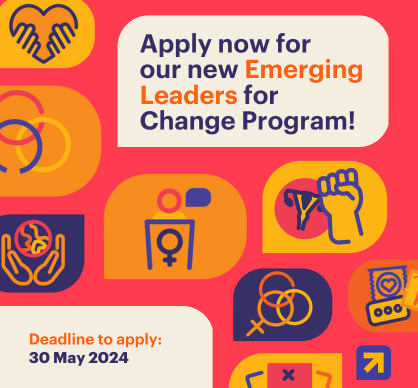 Produced by Women Deliver
May 6, 2016
Susan Papp, Director for Policy and Advocacy, and Katja Iversen, CEO, Women Deliver
Produced by Women Deliver
May 6, 2016
Susan Papp, Director for Policy and Advocacy, and Katja Iversen, CEO, Women Deliver
Time to Bring Diabetes Out of the Shadows and into Maternity Care
The bad news: Diabetes in pregnancy is a serious – and often undiagnosed – complication that puts millions of women and babies at risk of death and lifelong illness. The good news: This week, FIGO (the International Federation of Gynecology & Obstetrics) took a critical step to bring diabetes out of the shadows. During the XXI FIGO World Congress, they released new global guidelines for how to screen and manage Gestational Diabetes Mellitus (GDM)—diabetes in pregnancy.
Bravo to FIGO for taking this groundbreaking step that, when implemented, will save lives, improve health, and reduce long-term healthcare costs in fragile health systems.
GDM puts millions of women and children at greater risk of premature death and disability, as well as chronic conditions like obesity, diabetes, and cardiovascular disease. The unfortunate reality is that to date, the issue of diabetes in pregnancy has received scant attention, even as maternal and newborn health has been widely embraced as a development priority.
Children born to mothers with GDM are four to eight times more likely to develop type 2 diabetes later in life and baby girls of mothers with GDM are more like to suffer similar challenges during their own pregnancies—thereby perpetuating a vicious cycle of intergenerational ill health. Recent research also suggests that diabetes in pregnancy is a leading risk factor for preterm birth in sub-Saharan Africa.

Though the dangers of GDM are no secret, the screening of pregnant women is woefully inadequate. In most low, low-middle, and upper-middle income countries, the majority of pregnant women are not screened, despite the fact that these are the very countries that contribute to nearly all—90%—of maternal and newborn deaths and poor pregnancy outcomes. Given that a woman with GDM has an increased risk of obstructed labor, pre-eclampsia, postpartum hemorrhage, and preterm birth, this should come as no surprise.
With the rates of GDM rising globally, these problems are only going to get worse. Recent projections show a 50% GDM increase as soon as 2035. We cannot wait until then to get a handle on the problem—the time to act is now. Luckily, the new FIGO guidelines give us a place to start. The guidelines can help pave the way by equipping health providers around the world with information on how to better care for their patients.
While this is a significant step forward, we must be realistic. Having guidelines will not do it alone. We cannot rely solely on FIGO to raise global and national awareness about diabetes in pregnancy and its devastating consequences.
Everybody has a role to play – professional societies, health providers, government officials, donors, civil society, businesses, and communities alike – to make the case for services that integrate GDM prevention, screening, and treatment into basic maternal, newborn, and child healthcare. However, if diabetes in pregnancy remains in the shadows, we will undermine existing efforts and miss the truly unique window that pregnancy provides to improve the health of women today and the future generations of tomorrow.
For more information on Gestational Diabetes, please see:


